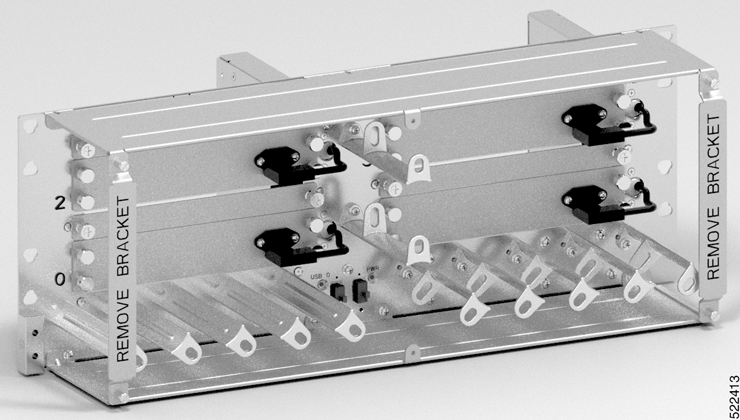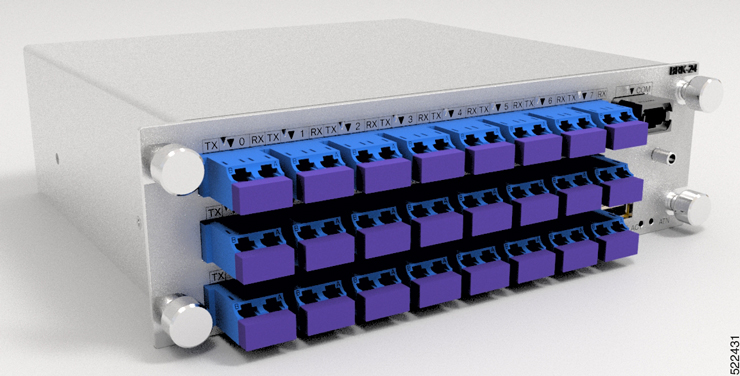Cisco NCS 1000 Breakout Patch Panel
Cisco NCS 1000 Breakout Patch Panel is colorless breakout-modular patch panel. It is powered by the NCS 1010 chassis using a single USB 2.0 cable from the NCS 1010 EITU. The breakout panel contains four USB 2.0 connections that power the breakout modules. It allows connections between the OLT-C and OLT-R-C line cards that are installed in the NCS 1010 chassis and the four breakout modules using MPO cables. The breakout panel supports up to 72 colorless mux/demux channels and 8-directional interconnections. The breakout panel is 4 RU high and has adjustable fiber guides for fiber routing. The empty slots are covered with dummy covers. The panel is shipped with USB 2.0 connectors that are connected to the corresponding dummy covers. The plastic transparent cover can be installed in front of the panel for fiber protection. The panel is designed to fit a 19-inch rack. The panel can also be installed on ETSI and 23-inch rack using adapter brackets.






 Feedback
Feedback